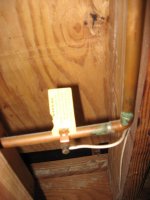That's a fine choice, but is not required in existing buildings, to my knowledge. So if the telephone and cable are properly grounded now, leaving it alone is a good option. If they aren't properly grounded now, using an intersystem device would be a good way to go.
Thats up to the AHJ, of course. If I was that AHJ, I would require it as fundamental changes to the grounding electrodes/GEC are being made, I would require that entire piece be brought up to code...which requires the ISBT.
Even if not required its just smart to do it now anyways as the hack jobs I have seen done by the cable guys, satellite guys are terrible. Clamps to the side of a painted service panel. Useless.
As to moving the telco's ground? Nope, I agree I wouldn't touch that right now if its fine, however I would want the terminal there and ready for the next install, whatever that is.
Just one guys opinion.
As to the rods, I'll disagree with you there. I work in Telecom and in the areas I work in (mostly Pennsylvania North/East), we have to put in large ground rings. The first rod usually gets us around to between 10-15 ohms, more than adequate for residential use. For the second rod to have much impact, it has to be pretty far from the first. The NEC requirements for the second rod (6 or 8 feet, I cant remember) usually only slices off another 2-3 ohms.
Again, YMMV depending on your soil types.

